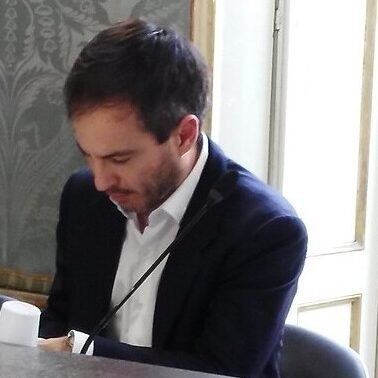In his first “historical speech to the Islamic world” US President Donald Trump spoke about the “battle between good and evil”, noting that from Lebanon to Iraq to Yemen, “Iran funds, arms and trains terrorists, militias and other extremist groups that spread destruction and chaos across the region”.
Chaos is indeed a major feature of the present-day Middle East. According to data provided by the US State Department, “incidents of terrorism” increased by 6,500 per cent since George W. Bush started the “War on Terror” in 2001. Half of these “incidents” have been registered in Afghanistan and Iraq.
The US invasion of the latter in 2003 is still often perceived as “also a consequence of 9/11”. This is despite the fact that 15 out of 19 hijackers who flew passenger jets into the Twin Towers being from Saudi Arabia, the country to whom Washington just sold $110 billion of weapons and that, in Trump’s plans, should serve as the leading power behind a new regional “anti-Islamists” organisation (“Arab Nato”): the “Middle East Treaty Organisation (METO)”.
Read: The Trump effect
It should be clarified that the US invasion of Iraq – that historically played the role of bulwark against the spread of Iranian influence in the region – had indeed very little to do with 9/11 and much more with the aim of providing Washington with a large, stable, oil-producing ally “as a hedge against the uncertain future of the House of Saud”.
The decision to overthrow Saddam Hussein’s regime as well as the US’ non-intervention in the war in Syria, were perceived by Saudi Arabia as indirect aid to Iran’s strategies. Largely as a consequence of this, over the last six years, Riyadh – whose military power vastly excees that of Teheran – has invested an enormous amount of resources in opposing the rise of any government or party that, in the Arab world, could have represented a credible alternative to the “Saudi model”. This also explains Riyadh’s decision to support the Egyptian army in the coup against the democratically elected President Mohamed Morsi who was a member of the Muslim Brotherhood.
It is mainly with this in mind, in addition to Iran’s increasing role in the region, that a struggle for a new balance of power and the continuation of some of the many proxy wars in the Middle East should be linked.
Read: Palestinian, Israeli leaders ready to ‘reach for peace’ says Trump
Yet, relations between Saudi Arabia and Iran – a theocracy where people can vote and women can drive – have not always been as tense as today. The two countries had for long shared a number of common interests, including cultural and economic ones.
Much changed as a consequence of the 1979 Islamic Revolution – itself largely rooted in the CIA-led 1953’s coup to oust democratically elected Prime Minister Mohammad Mossadeq – when the regime of the Shah of Reza Pahlavi was overthrown.
![US President Donald Trump (L) and Saudi Arabia's King Salman bin Abdulaziz Al Saud (R) attend the Arabic Islamic American Summit in Riyadh, Saudi Arabia on May 21, 2017 [Bandar Algaloud / Saudi Kingdom Council / Handout/Anadolu Agency]](https://i0.wp.com/www.middleeastmonitor.com/wp-content/uploads/2017/05/20170521_2_23801770_22355142.jpg?resize=368%2C333&ssl=1)
US President Donald Trump (L) and Saudi Arabia’s King Salman bin Abdulaziz Al Saud (R) attend the Arabic Islamic American Summit in Riyadh, Saudi Arabia on May 21, 2017 [Bandar Algaloud / Saudi Kingdom Council / Handout/Anadolu Agency]
Behind the apparent religious diatribes there were therefore practical considerations aiming at carving out a more favourable regional order and at neutralising any potential internal destabilisation.
All this brings us back to Trump’s talk in Riyadh and his rhetoric about the “battle between good and evil”. It might appear as a déjà–vu of George W. Bush’s era, but this time the unstated goal is to build a “Sunni coalition” to curb the “Shia block” – supported also by Russia, whose arms sales to the MENA amounted to $12.7 billion from 2006 to 2015 – and foster the interests of the only nuclear power in the Middle East (Israel).
Read: Trump ‘swallowing’ Israeli propaganda by comparing Hamas to Daesh
This “vision” will likely be implemented by flooding the region with weapons, largely produced in the US and EU countries and smuggled mainly through the Balkans and Black Sea ports. The movements of much of these arms – that according to Robert Stephen Ford, US ambassador to Syria between 2011 and 2014, are coordinated by the CIA, Turkey and Gulf states through centres in Jordan and Turkey – will likely continue to be used also by members of Ansar Al-Sham, Al-Qaeda-affiliated Jabhat Al-Nusra, Daesh and other terror groups.
Washington, responsible for about 33 per cent of global arms sales, needs to bring diplomacy back in and abandon once and for all the idea that local regimes and weapons deals worthy of $110 billion are part of a solution and not of the problem. Any genuine “plan” for defeating “Islamic terror groups” and reducing Iran’s appeal and interference in Iraq, Lebanon, Libya, Syria and Yemen, passes first and foremost through this.
The views expressed in this article belong to the author and do not necessarily reflect the editorial policy of Middle East Monitor.

![Protesters march against the 'Muslim Ban' in New York, US on 4 February 2017 [Alisdare Hickson/Flickr]](https://i0.wp.com/www.middleeastmonitor.com/wp-content/uploads/2017/05/2017_2_4-protest-Trumps-muslim-ban32627628431_7de0787b86_o.jpg?fit=920%2C613&ssl=1)







